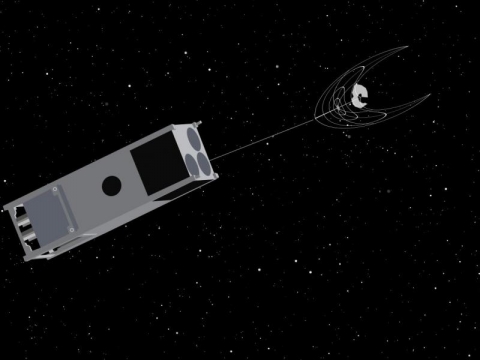A sampling of recent articles, press releases, etc. related to student and amateur CubeSat / SmallSat projects and programs:
** CubeSat built by undergraduate students at Birla Institute of Technology, Pilani in India will include an advance imaging system: BITS Pilani students inch closer to nano-sat launch – AsianAge.com
Mentored by experts from the Indian Space Research Organisation (Isro), undergraduate students at Birla Institute of Technology, Pilani, are inching closer to their dream of designing and launching a nano-satellite or cubesat — of the size of a shoebox – with a special camera that will help study the earth’s surface for response during natural hazards and track carbon dioxide (CO2) emissions.
The country’s first student-run undergraduate research group, which is on a mission to launch a one-of-its-kind nano-satellite with hyperspectral imager, has been christened Team Anant. It has 40 members across all engineering branches and batches at the Rajasthan-based institute.
** Students at Rensselaer Polytechnique Institute (RPI) are building OSCaR (Obsolete Spacecraft Capture and Removal) smallsat to test techniques for de-orbiting space debris
- Rensselaer Team Developing Tool to Battle Space Debris | School of Engineering
- Meet OSCaR: Tiny Cubesat Would Clean Up Space Junk | Space.com

From the RPI article:
… [Professor Kurt] Anderson and his students are developing OSCaR, a small device that will be able to inexpensively be sent into space aboard larger vehicles and then released to nearly autonomously seek out, capture, and then de-orbit space debris.
OSCaR is a three-unit member of a class of very small satellites known as CubeSats. Each unit is a small and light 10 cm x 10 cm x 10 cm cube.
One of those CubeSat units will house the “brains” of OSCaR including GPS, data storage, and communication, as well as the power and thermal management systems. Another will hold propellant and the system’s propulsion module to drive OSCaR forward. The third unit will contain four gun barrels, nets, and tethers to physically capture debris, one piece at a time. This capture module will also have optical, thermal, and RADAR imaging sensors to help OSCaR locate debris in the vastness of its surrounding space.
After it is done collecting debris, OSCaR will be programmed to deorbit itself within five years, destroying itself and the debris it caught.
** AMSAT news on student and amateur CubeSat/smallsat projects: ANS-118 AMSAT News Service Special Bulletin
- AMSAT 50th Anniversary Issue of AMSAT Journal Available For All
- PHL-Microsat Issues Diwata-2 Amateur Radio Unit Service Announcement
- Coronation Station HS10KING/mm On Geostationary Satellite
- SatNOGS Satellite Ground Station Article in HackSpace Magazine
- AMSAT South Africa Developing AfriCUBE SDR-based CubeSat
- Interview with Peter Gülzow, AMSAT-DL President
- PSAT2, ISS Sat Gate needed in Central America
- Upcoming Satellite Operations
- ARISS News
- Shorts From All Over
General CubeSat/SmallSat info:
- Events:
- iCubeSat | Home of the Interplanetary CubeSat Workshop – Milan, Italy – May 28-29, 2019.
- Barcelona TechnoWeek 2019 — CubeSat – Barcelona, Spain – June 17-21, 2019.
- Spanish Small Satellites International Forum 2020 – Málaga, Spain – February 25-27, 2020 – Workshop for small satellites designers, technicians, developers & launchers.
- Resources:
- Misc. news:
- Three BIRDS Constellation CubeSats Delivered to ISS for Orbital Deployment – ARRL.org
- UK CubeSat takes aim at illegal maritime activity | The Engineer
- SRI International Demonstrates Interferometric SAR with Radar Designed for CubeSat Form Factor – SRI
- Satellite awards at RSGB AGM | Southgate Amateur Radio News
- AMSAT VP for Human Spaceflight Programs explains operations onboard the ISS | Southgate Amateur Radio News
====